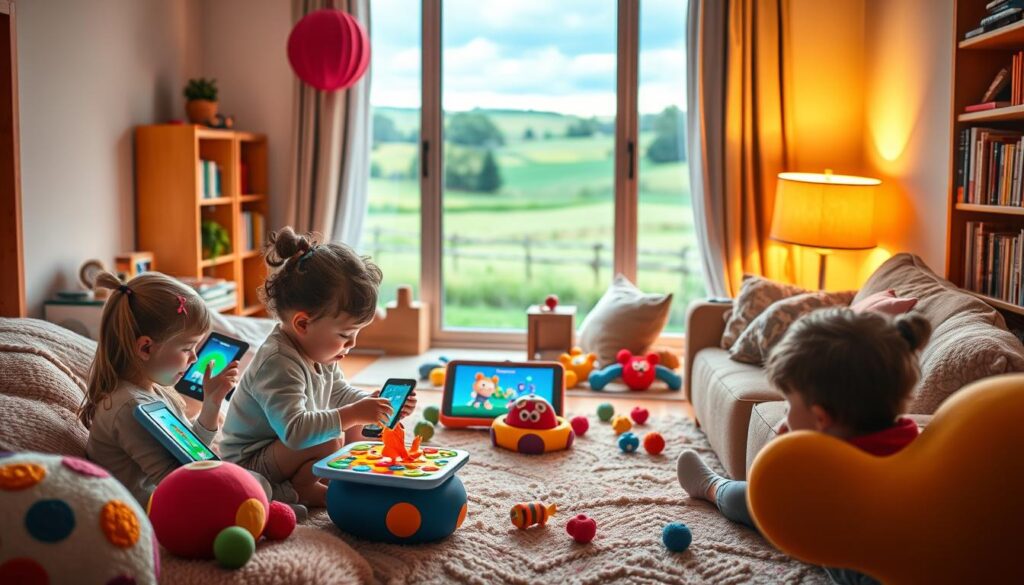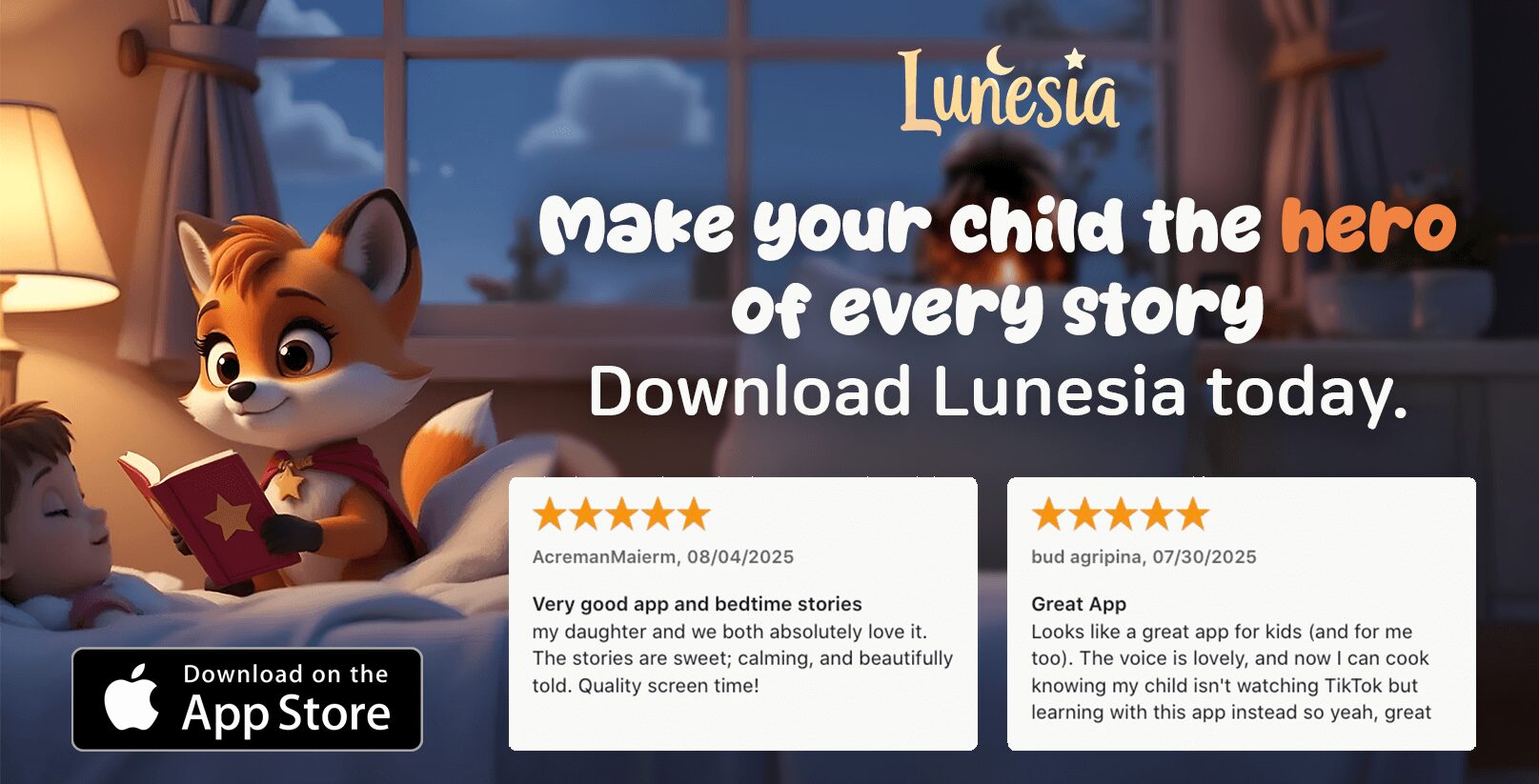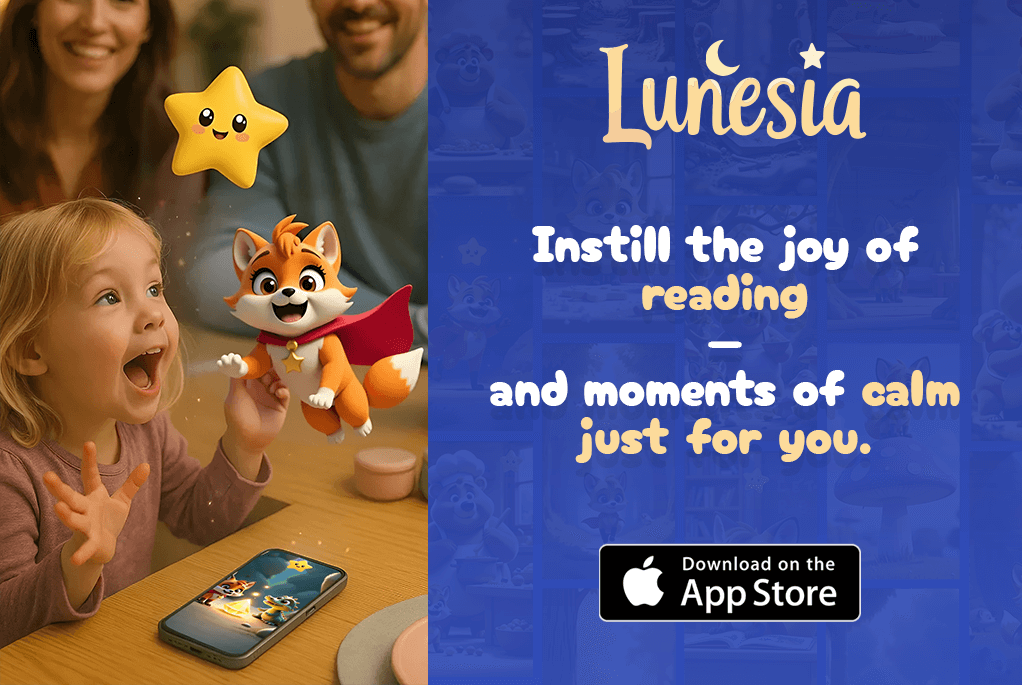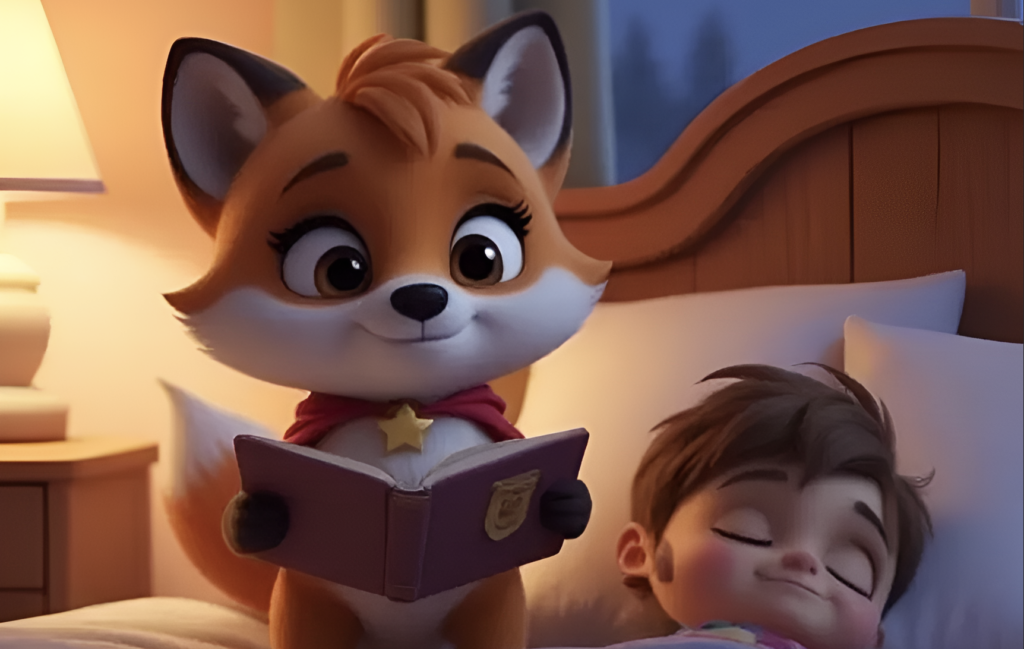As a parent, navigating the digital world for your child can be daunting. With 80% of parents reporting their kids under 11 watching YouTube videos, it’s clear that digital content consumption is on the rise among children. The challenge lies in selecting quality content that is both entertaining and educational.
You’re not alone in this challenge. Many parents struggle to make informed choices between interactive platforms and passive viewing options for their kids. This is where Lunesia and YouTube Kids come into play, offering different approaches to content consumption.
This article aims to guide you through the key differences between these platforms, focusing on their engagement, learning, and safety features. By understanding these differences, you can make a more informed decision that aligns with your family values and your child’s developmental needs.
The Digital Content Landscape for Children
As digital media continues to shape the entertainment and education of children, parents are faced with crucial decisions about the kind of content their kids consume. The term “digital babysitter” often surfaces in discussions about kids and platforms like YouTube, highlighting the complex relationship between screen time and parenting.
Rising Digital Entertainment
The digital entertainment landscape for kids has expanded dramatically, offering a wide range of options that were previously unimaginable. This shift has transformed how children spend their leisure time, with digital media playing a central role.
Concerns About Screen Time
However, this increased exposure to digital content has raised significant concerns among parents regarding screen time and its impact on their child‘s development, social skills, and physical health. Setting time limits is crucial, as is ensuring that the content is not just entertaining but also enriching. For more insights on balancing screen time and quality content, you can explore resources like how digital media affects children’s brains and apps that foster creativity in kids.
By being mindful of these factors, parents can make informed decisions that support their child‘s overall well-being in the digital age.
Understanding Lunesia vs YouTube Kids
In the quest for quality online content for kids, two platforms stand out: Lunesia and YouTube Kids. As a parent, you’re likely weighing the pros and cons of each to decide what’s best for your child.
Let’s dive into what makes each platform unique, starting with Lunesia.
What is Lunesia?
Lunesia is an innovative platform designed to offer high-quality, interactive content for children. By focusing on engagement and education, Lunesia provides a unique approach to kids’ digital entertainment.
With its emphasis on interactivity, Lunesia encourages children to participate actively, rather than passively watching videos. This can be a more effective way to promote learning and development.
What is YouTube Kids?
YouTube Kids is a specialized app designed to offer a safer version of YouTube for children. It filters content to ensure it’s appropriate for young viewers, using algorithms and human reviewers to screen videos.
The app categorizes its vast library of kid-friendly content into age-based categories: Preschool (ages 4 and under), Younger (ages 5-8), and Older (ages 9-12), making it easier for parents to choose what’s suitable for their child.
One of the key benefits of YouTube Kids is its parental control features, allowing parents to block specific channels or videos, set time limits, and customize their child’s viewing experience.
Interactive vs. Passive Content: Why It Matters
In today’s digital world, the distinction between interactive and passive content is more important than ever for children’s development. As parents, we’re not just choosing between different types of content; we’re deciding how our kids will engage with the digital world.
The competition in digital entertainment means our children have more choices than ever, but it’s up to us to ensure they’re not just passive viewers. The way we consume videos and other digital content can significantly impact a child‘s cognitive development.
The Science Behind Interactive Learning
Interactive learning is backed by science. When kids engage with interactive content, they’re not just watching; they’re participating. This active engagement enhances their learning experience, making it more effective. Research shows that interactive content can improve cognitive skills, boost creativity, and even enhance problem-solving abilities.
For instance, platforms that offer interactive videos encourage kids to think critically and make decisions, which is crucial for their development. This way of learning is more engaging and can lead to better retention of information.
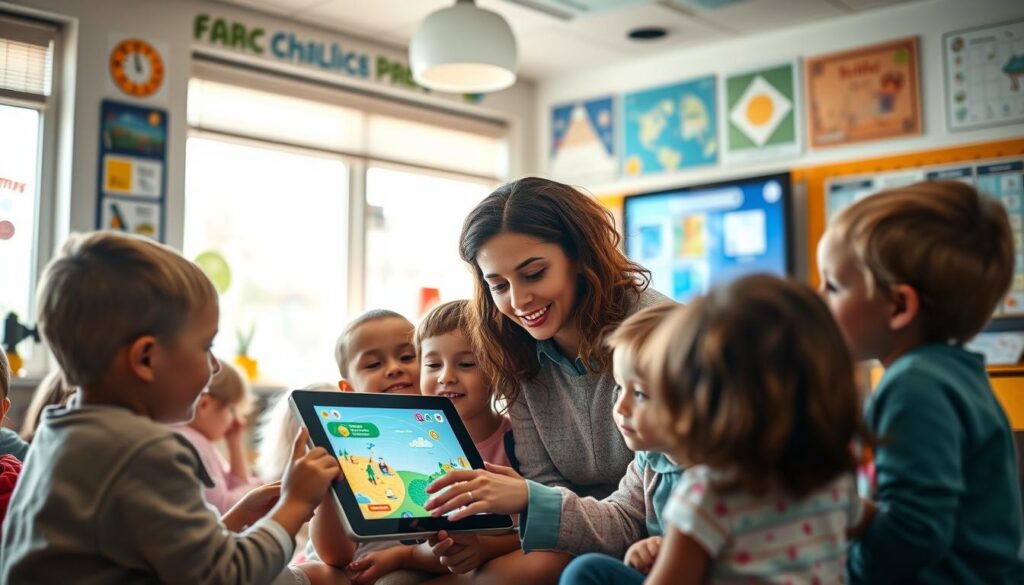
The Limitations of Passive Viewing
On the other hand, passive viewing, such as watching YouTube Kids videos without any interaction, can have its drawbacks. While it might be entertaining, it often fails to challenge children or provide the feedback loop necessary for deep learning.
- Excessive passive screen time is linked to delayed language development and reduced creative thinking.
- Passive viewing can lead to shorter attention spans and reduced cognitive engagement.
- The “zombie effect” observed in children after extended passive viewing is a concern for many parents.
Even high-quality passive content can’t replace the benefits of interactive engagement for developing minds. As we choose between YouTube Kids and other platforms like Lunesia, understanding the value of interactive content is crucial.
Lunesia: A Deep Dive
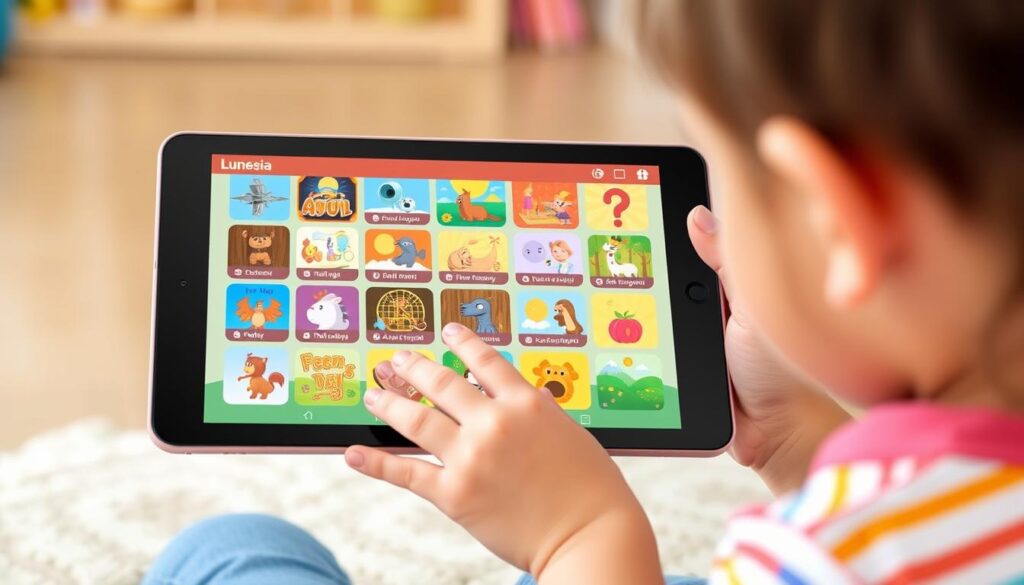
As we explore the world of interactive content for kids, Lunesia stands out as a platform worth examining closely. With its comprehensive approach to education and safety, Lunesia is designed to provide a secure and engaging environment for children.
Key Features and Content Library
Lunesia boasts a diverse content library that’s both entertaining and educational. The platform offers a range of interactive activities tailored to different age groups and learning needs, ensuring that every child can find something that suits their interests and abilities. From puzzles and games to creative expression tools, Lunesia’s content is designed to foster learning through play.
Educational Value and Learning Approach
Lunesia’s educational value lies in its interactive learning approach, which encourages kids to participate actively in the learning process. By incorporating elements of gamification and hands-on activities, Lunesia makes learning fun and engaging. This approach not only helps children develop new skills but also builds their confidence and problem-solving abilities.
Safety and Parental Controls
For parents, one of Lunesia’s most compelling features is its robust parental controls. The platform allows you to customize your child’s experience, setting limits on screen time, controlling access to content, and monitoring progress. Lunesia prioritizes child safety, ensuring a secure digital environment by limiting data collection, complying with online privacy regulations, and eliminating external links and advertisements. You can review our comprehensive privacy policy here to understand how we protect your child’s account and personal information.
YouTube Kids: A Comprehensive Look
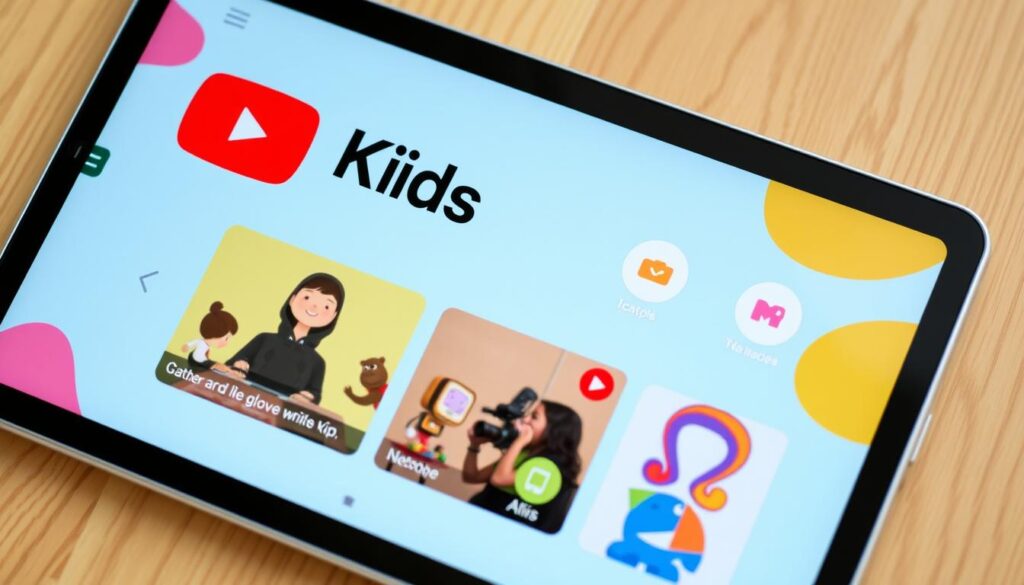
As a parent, you’re likely no stranger to the YouTube Kids app, but have you ever stopped to consider what’s really on offer? YouTube Kids is designed to provide a safe and engaging environment for children to explore their favorite videos and discover new ones.
Content Library and Popular Channels
The YouTube Kids content library is vast and diverse, featuring a wide range of videos from popular channels like PBS Kids, Nursery Rhymes, and Kids Diana Show. These channels offer a mix of educational and entertaining content that caters to different age groups and interests.
Safety Features and Age Filters
YouTube Kids incorporates various safety features, including age filters that help parents control what their children can watch. The app allows parents to create a customized experience for their kids, ensuring they only access content suitable for their age.
Advertising and Commercial Content
One of the concerns with YouTube Kids is its approach to advertising. While the platform claims to carefully screen ads to ensure they’re child-friendly, there are still controversies surrounding the blurring of lines between entertainment and marketing. For instance, brand channels like Barbie and Fisher-Price can be seen as promoting products, and “unboxing” videos raise questions about commercial influence.
Comparing Content Quality and Educational Value
As parents navigate the digital landscape for their children, assessing the educational value of platforms like Lunesia and YouTube Kids becomes essential. The way kids consume content has evolved, with many moving beyond passive viewing to more interactive experiences.
Educational Content Assessment
Lunesia and YouTube Kids offer different approaches to content delivery. Lunesia focuses on interactive content that encourages active participation, problem-solving, and creative output. For instance, kids can engage with content similar to Sesame Street, where they are not just watching but are also prompted to respond or solve problems. On the other hand, YouTube Kids is known for its vast library of videos, including popular channels that feature entertaining content, such as Minecraft gameplay by popular YouTubers like Stampy or Diamond Minecart Dan.
The educational value of Lunesia lies in its ability to engage kids in meaningful activities that promote learning and development. In contrast, YouTube Kids, while entertaining, often focuses on passive viewing experiences.
Entertainment vs. Engagement Metrics
The metrics used to measure success on these platforms differ significantly. YouTube Kids measures success through viewership and retention, metrics that are tied to entertainment value. Lunesia, however, measures success through the completion of activities and skill development, focusing on engagement metrics. Research suggests that while entertainment can capture attention, it’s the engagement that fosters deeper learning and cognitive development.
Understanding the difference between “lean back” and “lean forward” experiences is crucial. YouTube Kids represents a “lean back” experience, where kids watch content passively. Lunesia, with its interactive content, encourages a “lean forward” experience, promoting active engagement. Balancing both types of experiences can create a well-rounded digital diet for kids.
By considering these factors, parents can make informed decisions about the type of digital content their children consume, ensuring a balance between fun, entertainment, and educational value.
Privacy and Safety Considerations
As a parent, ensuring your child’s safety online is a top priority, and understanding the privacy and safety features of platforms like Lunesia and YouTube Kids is crucial. The digital landscape is ever-evolving, and with it, the concerns about how our kids interact online.
Data Collection and Tracking Policies
YouTube Kids, like many online platforms, has data collection and tracking policies in place. These policies are designed to provide a safer experience for kids, but they also mean that some data is collected. It’s essential for parents to understand what data is being collected and how it’s used.
For instance, YouTube Kids uses algorithms to filter out inappropriate content and allows parents to flag videos that may have slipped through. However, the extent of data collection and how it’s utilized can be a concern for many parents.
Content Moderation and Filtering
Content moderation is a critical aspect of ensuring kids’ safety online. YouTube Kids employs a combination of algorithms and human review to filter out inappropriate content. While this approach has been largely effective, there have been instances where inappropriate content has slipped through.
A comparison of Lunesia and YouTube Kids’ content moderation approaches reveals different strategies. Lunesia focuses on curated content, ensuring that all material is vetted before it’s available to children. In contrast, YouTube Kids relies on its filtering system and user reporting to identify inappropriate content.
| Platform | Content Moderation Approach | Data Collection |
|---|---|---|
| Lunesia | Curated content, vetted before release | Limited data collection, focused on improving user experience |
| YouTube Kids | Algorithmic filtering combined with human review and user reporting | Some data collection for personalization and safety |
Making the Right Choice for Your Child
The decision between Lunesia and YouTube Kids ultimately depends on your family’s values and digital habits. As parents, it’s essential to consider what kind of digital environment you want to create for your kids.
Age-Appropriate Considerations
When choosing between Lunesia and YouTube Kids, consider the age of your child. Different platforms offer content suitable for different age groups. For instance, younger children may benefit more from interactive content that teaches basic skills, while older kids might engage more with platforms offering a variety of educational and entertainment content.
For example, a comparison of the two platforms based on age appropriateness can be seen in the following table:
| Age Group | Lunesia | YouTube Kids |
|---|---|---|
| 2-4 years | Interactive learning content | Simple nursery rhymes and cartoons |
| 5-7 years | Educational games and puzzles | Educational videos and kid-friendly shows |
Aligning with Your Family’s Digital Values
Your choice should also reflect your family’s broader digital values. Consider how each platform aligns with your approach to digital parenting. For instance, if you prefer a more controlled environment with a focus on educational content, Lunesia might be the better choice. On the other hand, if you’re looking for a platform with a wide variety of content and are comfortable with setting your own boundaries, YouTube Kids could be more suitable.
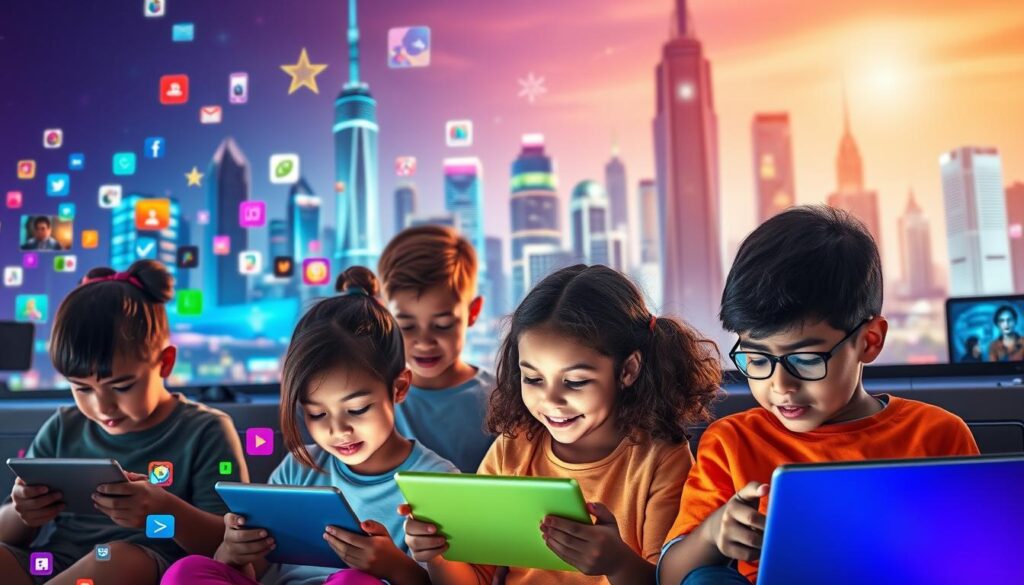
It’s also crucial to involve your child in the decision-making process and have open conversations about digital media choices. This not only helps in making a more informed decision but also teaches your child about digital literacy and critical consumption.
Conclusion: Balancing Quality and Convenience in Children’s Digital Media
As a parent, choosing between platforms like Lunesia and YouTube Kids can be challenging, but it’s crucial for our children’s digital well-being. The key difference lies in their approach: Lunesia prioritizes interactive engagement, while YouTube Kids offers convenient, passive entertainment.
A balanced approach is likely the best for most families, combining both interactive and passive digital experiences with plenty of offline activities. The science behind interactive learning suggests it offers more developmental benefits, but high-quality passive content also has its place.
It’s essential to be intentional about our children’s digital diet, making conscious choices rather than defaulting to what’s most convenient. As digital platforms evolve, parents must stay informed and regularly reassess their children’s media consumption. Regardless of the platform chosen, parental involvement and guidance remain crucial in creating a healthy digital environment.
With thoughtful consideration, digital media can be a positive force in children’s lives, encouraging active participation, creativity, and learning. By making informed choices, we can harness the potential of digital media to support our children’s development.
FAQ
What are the benefits of interactive content for children?
Interactive content, such as that found in educational apps like Khan Academy Kids or art-focused platforms like Art Kids Hub, can enhance learning by engaging children actively, promoting a deeper understanding of the subject matter, and developing problem-solving skills.
How can parents ensure their child’s safety while using digital media?
Parents can ensure their child’s safety by utilizing parental controls, such as those available on YouTube or through apps like PBS Kids, setting time limits, and monitoring the content their child accesses to ensure it is age-appropriate and aligns with their family’s digital values.
What is the difference between passive viewing and interactive learning?
Passive viewing involves watching content without actively engaging with it, whereas interactive learning encourages children to participate, ask questions, and explore topics in-depth, fostering a more effective learning experience.
Are there any educational sources that provide high-quality content for children?
Yes, sources like National Geographic Kids, Sesame Street, and Khan Academy Kids offer high-quality, educational content that is both fun and informative, making learning an enjoyable experience for children.
How can parents control the amount of screen time their child has?
Parents can control screen time by setting limits on the amount of time spent on digital media, encouraging physical activity, and promoting other hobbies and interests outside of the digital realm.
What factors should parents consider when choosing digital media for their child?
Parents should consider factors such as the child’s age, the educational value of the content, safety features, and the platform’s data collection policies to ensure they are making an informed decision that aligns with their family’s values.
